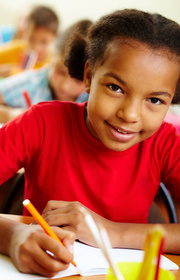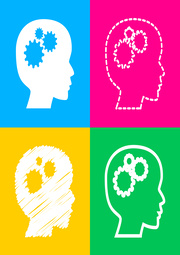How to Help Your Child with Their School Work
It is our parents’ great duty to see to it that our kids receive an education that fosters their development into well-rounded adults. As important as educational institutions are to this journey, a parents proactive participation in their education at home supports the lessons they acquire in school and ultimately sets them up for success in the classroom.
It can be challenging to strike a healthy balance between giving them the support they need and encouraging their independence. Here are a few of the most useful and successful parenting techniques that will enable you to support your child in achieving academic success while also fostering their independence and igniting their enthusiasm for learning.
Create a Structured Homework Routine
Creating a homework schedule that is both disciplined and well-organized in your home is crucial to your child’s academic development. This practice includes not only choosing a space for study but also allocating a precise and regular amount of time each day for homework. A structure like this acts as a cornerstone for teaching your child time management and responsibility. They can anticipate and prepare for their study sessions by sticking to a schedule, which in turn fosters accountability and reduces the temptation to put off work. Consequently, a disciplined schedule serves as the foundation for the development of a strong work ethic.
Be a Supportive Presence
It takes more than just keeping an eye on your child’s homework sessions to be a supportive figure in their educational journey. It’s about establishing a space where they feel valued, inspired, and at ease asking for help when they need it. Although you shouldn’t micromanage them or follow them around at all times, you should always be available to offer advice and support. This presence creates a sense of security and encourages a positive attitude toward learning by reassuring your child that they can come to you for support and direction when they run into problems.
Understand Their Learning Style
Each child has an individual learning style that is a blend of their preferences and cognitive strengths. It’s critical to acknowledge and accept these differences to customize your support and optimize their learning potential. Certain kids learn best visually, taking in information more efficiently when presented in the form of charts, diagrams, and other visual aids. Others learn best through auditory means, so conversations and spoken explanations are most helpful to them.
On the other hand, kinesthetic learners benefit greatly from practical exercises and direct physical engagement with their subject matter. Finding out which learning style your child prefers will help you provide them with resources, tools, and techniques that will make their learning more interesting, successful, and pleasurable. You can even encourage them to consult materials produced by other students, and this is where those practical OSSD resources can come into play for all secondary school students in Ontario, for instance, so consider this as well.
Collaborate with Teachers
Your child’s academic progress depends heavily on your ability to collaborate and communicate with their teachers. Being actively involved in their education means asking for regular feedback on their academic performance, participating in school events, and attending parent-teacher conferences. Working together with educators guarantees that you are aware of your child’s strengths, areas that need work, and any extra help they might require. Together with educators, you can create focused plans to deal with any difficulties your child may encounter, ensuring they get the help they need at home and in the classroom.
Encourage Questions and Critical Thinking
A vital part of your child’s educational development is to support their curiosity and critical thinking. When they come across difficult concepts, encourage them to investigate and evaluate the process of problem-solving rather than just giving them answers. By assisting them in overcoming these mental obstacles, you enable them to become self-sufficient learners who can handle challenging problems on their own in addition to helping them find answers. This method fosters a spirit of inquiry and curiosity, which supports their cognitive development and improves their capacity to successfully traverse the wide world of knowledge.
Set Realistic Expectations
Keeping your expectations for your child’s academic performance reasonable is crucial to their general well-being and motivation in the long run. Aspiring for the best results is normal, but if you have unreasonable expectations, it can unintentionally cause stress, anxiety, and even a loss of interest in learning. Each child is an individual with strengths and weaknesses that are specific to them, and it is important to celebrate these differences. Regardless of whether your child achieves perfection, instead of comparing them to others, celebrate their efforts and concentrate on their progress. With this method, your child will learn in a supportive and encouraging environment free from the stress of having to meet unattainable goals.
Promote a Love for Learning
The most important thing is to instill in your child a true and lasting love of learning. This is more than just doing well in school; it’s about cultivating a lifelong love of learning. As a family, explore new interests, have meaningful conversations about a wide range of topics, and share your enthusiasm for a variety of subjects. To pique their interest and extend their horizons, take them to libraries, museums, and art shows. Children get an innate desire to learn, explore, and discover when they see education as a fun and never-ending adventure. By fostering this passion for learning, you are giving them a skill and mindset that will last a lifetime, one that goes beyond academic success and molds them into self-motivated people who are always looking to learn more about the world.
Assisting your child with their schoolwork is a complex and immensely fulfilling task that calls for commitment, flexibility, and a strong sense of duty to their educational path. You can effectively mentor your child toward academic success and personal development by implementing all of the advice provided here and making the most of these ideas. Recall that the ultimate objective is not only academic success but also the acquisition of lifelong useful skills and attitudes. Your child can succeed academically and acquire a lifelong love of learning with your unwavering support, encouragement, and investment in their education, putting them on the path to a successful and rewarding future.










